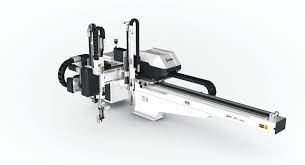
The servo-driven robot is the most common type of robotic system and is suitable for various tasks. They use servo motors to control their movement and can also perform some simple programming tasks. It is essential to consider certain aspects when planning the machine to create the best possible servo-driven robot. Here are some of the most important.
Servo-driven robots are a little different from the other types of robots you can find!
Servo-driven robots are a little different from the other types of robots you can find. They’re not autonomous or mobile and don’t have to be industrial or used for heavy lifting. These machines are designed for small parts that require high precision, so they are called servo drives.
External sources control the servo-driven robots, which means they need power and input to the system. Servos are programmed to move along specific paths based on sensor feedback; this makes them useful in manufacturing processes where parts need to be assembled in precise positions relative to each other.
Servo-driven robots are ideal for applications where accuracy and reliability are critical!
Servo-driven robots are ideal for applications where accuracy and reliability are critical. For example, they’re commonly used in manufacturing processes that require high precision, such as circuit boards and microchips.
Servo-driven robots can also be found in many other industries that require precise control over a machine’s movements:Aerospace: Servo-driven robots often assemble parts or inspect aircraft during maintenance checks. Food Service: Many restaurants use food preparation machines equipped with servos to prepare meals faster than human employees can ever manage (and without making mistakes).
Servo-driven robots need to know how their motors work!

Servo motors are the most popular type of motor in modern servo-driven robots. They are suitable for use in various ways, including controlling the motion of robot joints and arms (and legs). Building a robot requires careful planning to ensure that you have enough servos available for all parts of your design.
Servo motors come in various sizes and shapes but share common characteristics: they’re small enough to fit into tight spaces yet powerful enough for heavy lifting tasks, such as lifting another object or grasping something with fingers or claws attached at one end. The other end houses an encoder wheel that allows you to precisely control its speed without having access directly inside its casing–this is important because some types require oiling while others don’t!
A servo-driven robot is a robot that uses a servo to move around!
A servo is a motor that can move in a specific direction and angle.
Servos can control the movement of robots, giving them greater flexibility than traditional DC motors. For example, you can use one servo to control each wheel on your robot so that it moves in any direction by changing how much power it supplies each wheel with (like how you would control two front-wheel drive cars). This allows your robot’s feet or wheels–or whatever else needs moving–to move independently from its body while still being able to turn around quickly without falling over!
It has several properties that affect their performance differently!
You should consider a servo-driven robot if you need your robot to be more reliable and cost-effective. Servo-driven robots are more expensive, but they are suitable for applications that require accuracy and precision.
Servo-driven robots have many features that will have a different impact on how well they perform: Servos are controlled by microcontrollers that allow you to program them exactly how you want them to move or react in certain situations. This will enable you to create precise movements without manually controlling every aspect of your machine’s movement yourself (which would be very difficult).
Final
In conclusion, there are many aspects to consider when building a servo-driven robot. Depending on your needs and budget, you may have to sacrifice some features for others. Through the introduction of the above points of importance, I hope you can choose a servo-driven robot that suits you and will significantly help your business.
Read More: